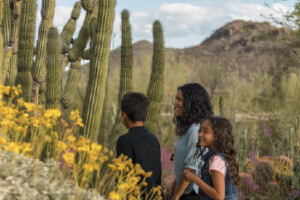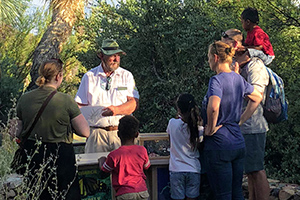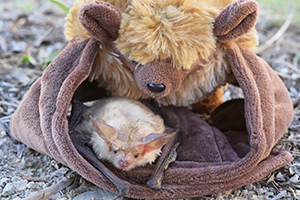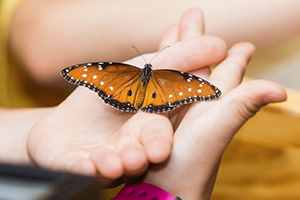Sonoran Desert Natural Events Calendar
Fall
Late September, October, November
October
Average high: 84.1�F (28.9�C)
Average low: 56.5�F (13.6�C)
Relative humidity at 5 am: 53%
Relative humidity at 5 pm: 25%
Normal rainfall: .79” (20.1mm)
Summer hangs on, with warm-to-hot days but cooling nights. It will freeze and most likely snow in the higher elevations. Some years might see unseasonable heavy rains this month, although this is uncommon.
Flora
Allergy sufferers bemoan the blooming of desert broom, a shrub that colonizes disturbed areas. However, broom flowers are a favorite of hundreds of butterflies, bees, wasps, and beetles. Many plants are fruiting, including barrel cacti, soapberry trees, desert hackberries, and wolfberries. Fall colors splash through canyons.
Fauna
Resident desert birds, or those that spend their winters here, are gorging on the many plant fruits. Most snakes head to winter burrows this month. One exception is the rosy boa, which lives in the warmer western deserts and will give birth this month and next. (Although most snakes remain fairly inactive in the colder months, keep in mind that they can emerge any time of year if enough warm days pass to sufficiently rouse them.) Wintering hawks arrive; common raptors include northern harriers, rough-legged and ferruginous hawks, kestrels, Merlins, and prairie falcons. Turkey vultures are mostly gone, but loud groups of common ravens replace them on carrion patrol.
Nature Watching Tips for October
Butterfly expert Robert Michael Pyle once remarked that he’s never
seen so many butterfly species on one plant at one time than when observing
a flowering desert broom (he saw more than forty-five species). Settle
down near one with a pair of binoculars and enjoy great purple hairstreaks,
snouts, many different sulphurs, swallowtails, checkerspots and more,
as well as bees, wasps, beetles, and flies. Look for desert broom in washes
or in disturbed areas, such as around new housing developments. ![]()
November
Average high: 72.5�F (22.5�C)
Average low: 45.2�F (7.2�C)
Relative humidity at 5 am: 54%
Relative humidity at 5 pm: 28%
Normal rainfall: .59” (15.0mm)
Balmy weather finally begins to settle on the deserts, while winter grips the mountains. Expect mostly dry weather, although well over half a foot of snow may fall up high. Storms from the northwest may bring cold, even freezing, temperatures to the deserts as well.
Flora
Fall colors snake across low- and mid-elevation canyons where sycamores, cottonwoods, ashes, and walnuts begin to give up their leaves. Desert broom seeds take to the air in cloudy puffs that look like snow. Desert mistletoe berries begin to form. If many branch ends of mesquite trees begin to brown up and die, chances are mesquite girdler beetles were at work. The females bore a trough around, or “girdle,” a twig and then lay their eggs in the soon-to-die tips.
Fauna
Anna’s and Costa’s hummingbirds are the most common hummingbirds at feeders now; both will breed in the winter. Some Costa’s hummingbirds leave southern Arizona for the winter, returning in early spring to breed before the foresummer drought sets in. Although reptiles are mostly inactive, larger desert mammals such as bobcats, coyotes, badgers, and gray and kit foxes will remain active throughout the winter. Male desert mule deer rub the velvet off their antlers, which grew throughout the summer. Soon they will begin sparring with each other as they prepare for breeding competitions in the winter months.
Nature Watching Tips for November
Fall in the desert grasslands is subtle but beautiful—golden grasses,
flocks of twittering winter sparrows, and raptors floating high above
make for special days in the well-preserved grasslands in the Altar Valley
southwest of Tucson (Highway 286 runs through its heart) and the San Rafael
Valley (southeast of Sonoita). ![]()
Weather values are from Tucson International Airport. Source: Arizona Climate: The First Hundred Years (Sellers, Hill, and Sanderson-Rae, 1985)










